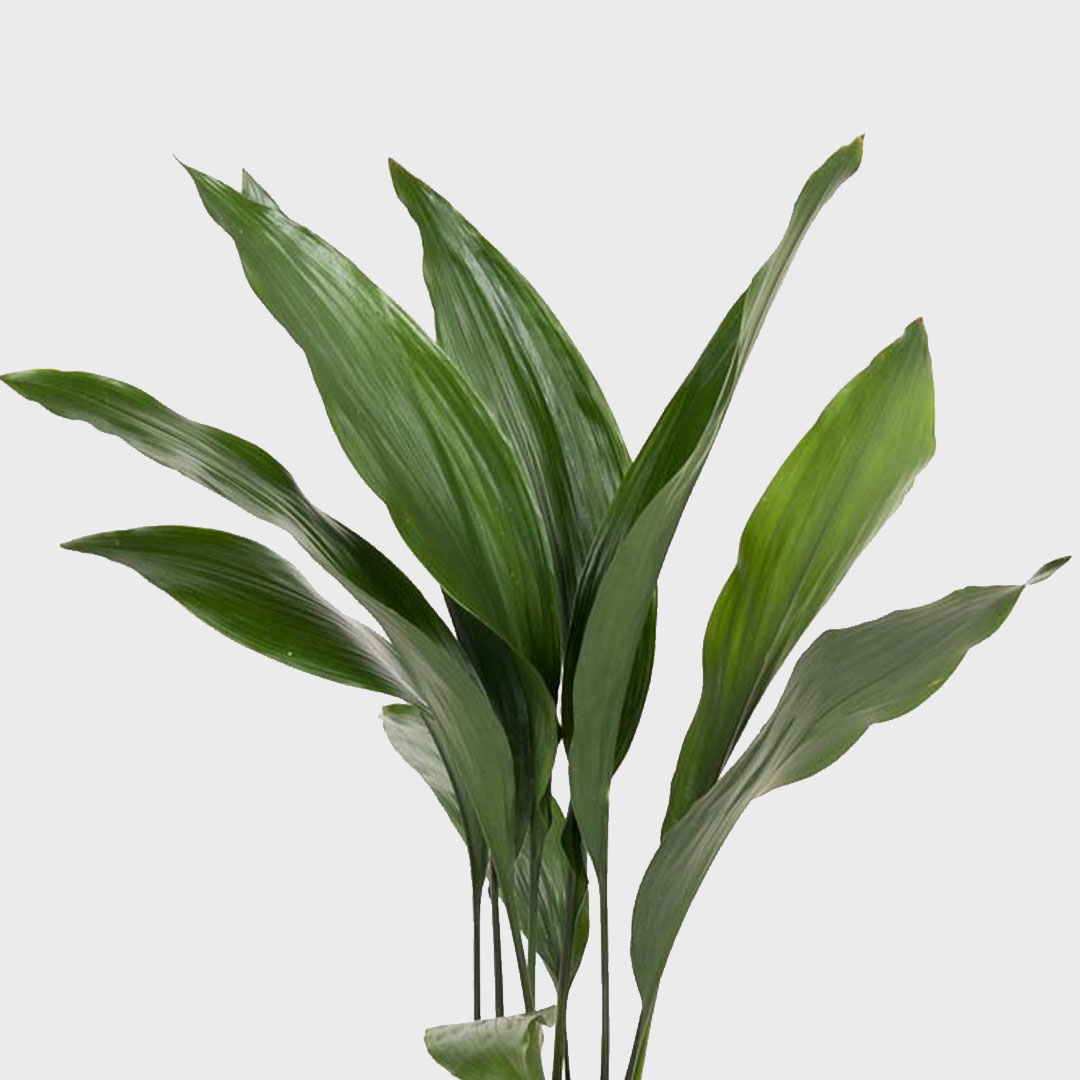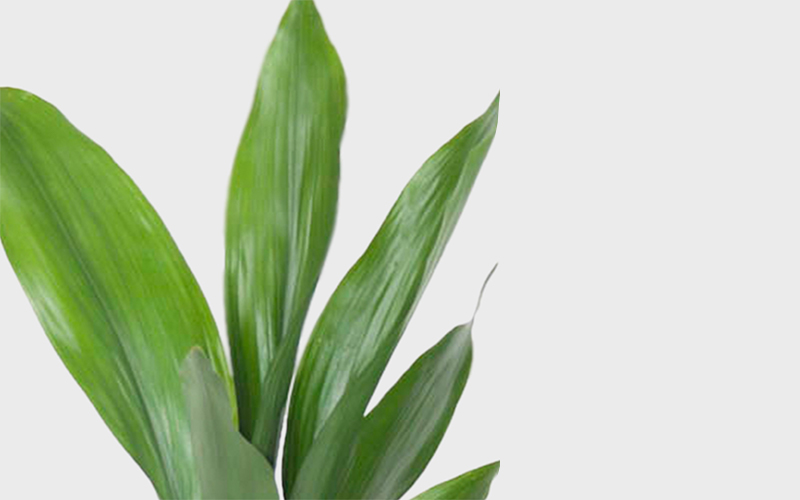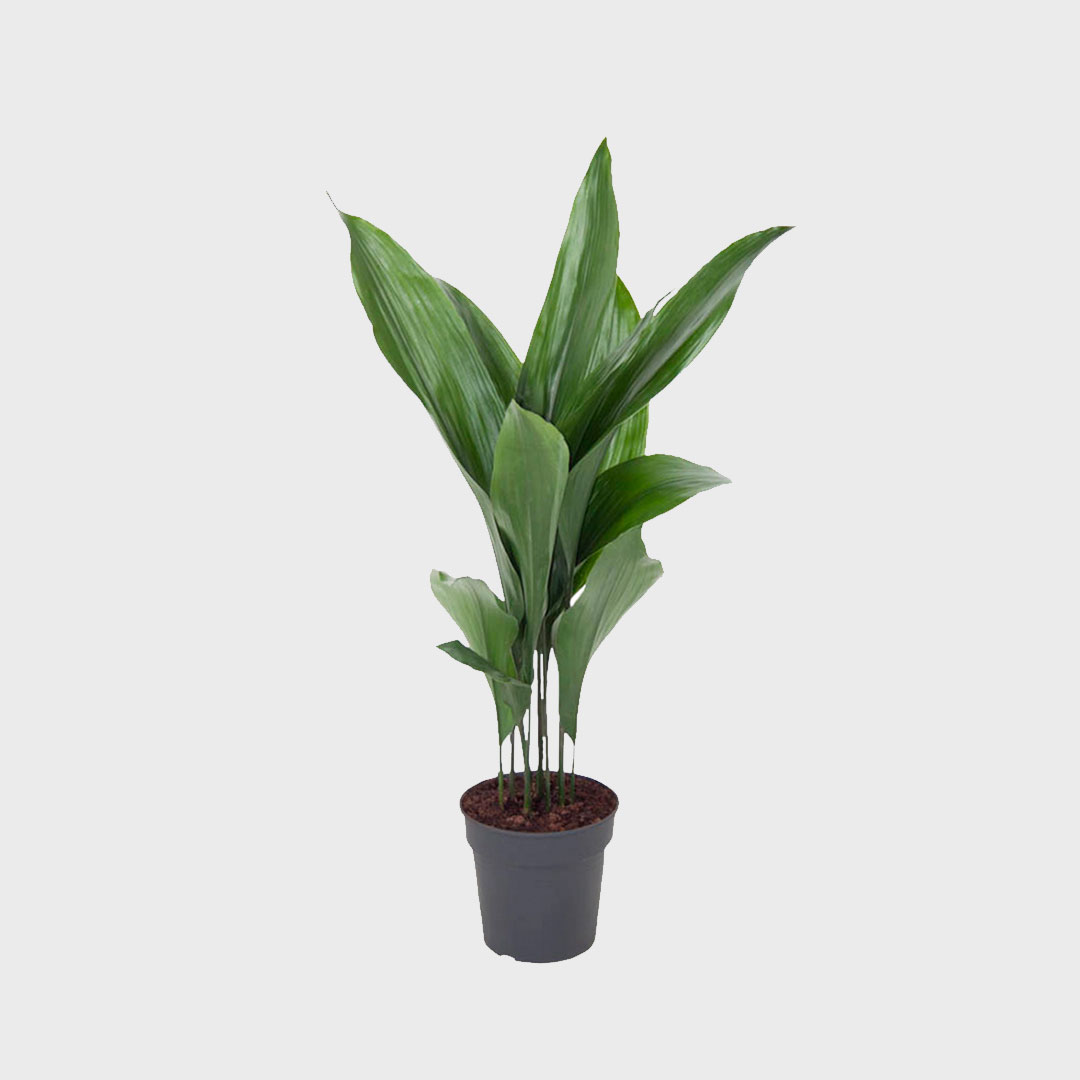
Deliver to
Luxembourg
 English
English

The Aspidistra Elatior is also known as the Cast Iron and Bar-room plant. These nicknames are a testimony to its sturdiness in surviving harsh weather. The plant originates from the Himalayas and is well accustomed to droughts. It's a perfect match for forgetful plant lovers!
The Aspidistra is an indoor plant, but it does well if you place it out in the summers too. Just give the plant some water every two weeks and keep it away from direct sunlight. Make sure the sunlight reaches your plant. It can range from indirect sunlight to partial shade.
Low light
Water every 2 weeks
Non-Toxic
Air-purifying
The Aspidistra likes a location with partial-shade to bright, indirect sunlight. Keep it away from the direct sun, though, as it can bleach and burn its foliage. As a indoor plant, the Aspidistra grows best in front of a north-facing window and can also do well under artificial lights.
Aspidistras are fairly drought-tolerant, but they will look their best if you water regurlarly. They like their soil moist but not soggy as it can lead to the development of root rot. One way to check if your Aspidistra needs water, is by sticking your finger in the soil. If you can't find a sign of dampness, the plant needs water.
Aspidistras are generally slow growers, so there’s no need to use a fertilizer for them. If you want, you can use plant nutrition from spring to summer. It is best to use plant nutrition at half strength. Too much fertilizer may lead to brown leaf tips and a decline in health.
The best time to repot an indoor plant is in the early spring. From April onwards, plants have enough energy to repair any damage caused by repotting. For an Aspidistra it is only necessary to repot the plant after two to three years. When repotting, always use a decorative pot that is at least 20% larger than its previous one.
The most ideal temperature for an Aspidistra plant is between 15 to 24 degrees Celsius. It prefers a cool to moderate temperature and can tolerate lower light conditions.
Regular pruning helps to remove any damaged or yellowed leaves, promotes new growth, and maintains a more compact appearance. Pruning an Aspidistra can also be done to control the size of the plant and prevent it from becoming too large or unruly. Clean and sharp pruning tools should be used to make clean cuts and avoid damaging the plant.
The Aspidistra is not a plant that quickly suffers from pests or diseases. If the plant does suffer from vermin, the Aspidistra usually suffers from scale insects. We recommend using pesticides in all cases of pests and diseases.

